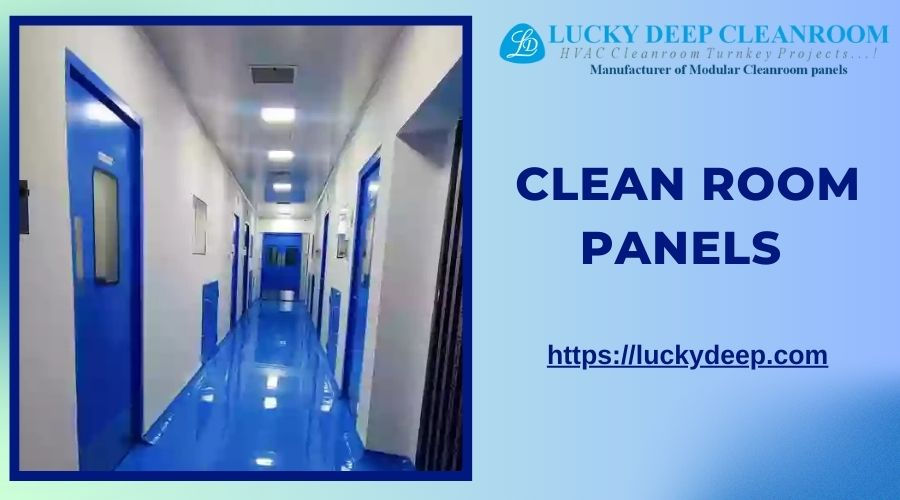Everything You Need to Know About Clean Room Wall Panels: Features, Materials & Specifications
- Lucky Deep
- May 8
- 2 min read
In controlled environments like cleanrooms, every component plays a critical role in ensuring sterility and compliance with regulatory standards. One of the most essential components in any cleanroom setup is the Clean Room Wall Panels. These panels not only define the physical structure but also contribute significantly to maintaining the controlled conditions inside. This blog dives into the key features, materials, and specifications of cleanroom wall panels, based on industry-leading standards offered by top modular cleanroom manufacturers.
What Are Clean Room Wall Panels?
Clean Room Wall Panels are specially designed modular wall systems used to create contaminant-free environments in pharmaceutical, biotech, electronics, and healthcare sectors. These panels are manufactured using advanced materials and techniques to offer durability, ease of maintenance, and optimal insulation.
Core Specifications of Cleanroom Wall Panels
Here's a detailed look at the specifications that make these panels suitable for high-performance cleanroom environments:
Surface Skin Options
● PCGI / PCGI (GPSP) – Pre-Coated Galvanized Iron
● PPGI / PPGI – Pre-Painted Galvanized Iron
● SS / SS – Stainless Steel (for high-grade hygiene)
● Any two of these materials can be combined based on application needs.
Structural Framework
● Material: GI (Galvanized Iron)
● Sheet Thickness Options: 0.5 mm, 0.6 mm, and 0.8 mm
● Powder Coating Thickness: 60–80 microns
● Pre-Coating Thickness: 30–35 microns
These coatings ensure corrosion resistance, durability, and long-lasting performance.
Insulation Options
● PUF (Polyurethane Foam): Density 40±2 kg/m³
● PIR (Polyisocyanurate): Density 48±2 kg/m³
● ROCKWOOL: Density options of 96 kg/m³ and 144 kg/m³ These insulation options provide excellent thermal performance, fire resistance, and soundproofing based on the application.
Sealant & Hygiene Control
● Sealant: Food-grade silicon is used on both sides of the panels.
● Panel Gaps: Gap should not exceed 4 mm, ensuring airtight sealing and minimal contamination risks.
Standard Dimensions
● Panel Width: 1200 mm (or customized as per room layout)
● Panel Height: As per the cleanroom design layout
● Panel Thickness: 35 mm, 50 mm, 80 mm, and 100 mm
Support & Installation
● Support System: Powder-coated base runners
● Structure: Self-supported panels with interconnecting profiles for seamless joints This modular system ensures quick installation, easy scalability, and minimal disruption to operations.
Color & Aesthetics
● Standard Color: RAL 9002
● Other Options: Custom colors available from the RAL chart Aesthetics also play a role in visibility, cleanability, and psychological comfort in controlled environments.
Panel Types
● Progressive Panels: Installed in a sequence, offering greater structural rigidity
● Non-Progressive Panels: Allow for easy disassembly and maintenance access without dismantling the entire wall
Conclusion
Choosing the right Clean Room Wall Panels is critical for maintaining hygiene, regulatory compliance, and operational efficiency. Whether you're building a new cleanroom or upgrading an existing one, understanding these technical specifications can help you make an informed decision. At Lucky Deep, we offer precision-engineered cleanroom wall panels that meet international standards for quality, safety, and performance. With a variety of options in materials, insulation, and finishes, we ensure that your cleanroom is built for reliability and longevity.





Comments